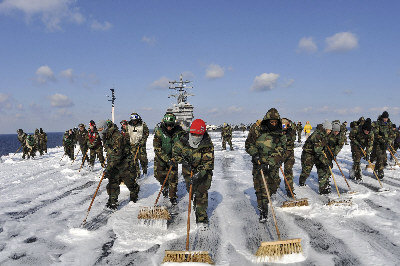无锡发现两名日本籍旅客核辐射放射性异常
新华网 2011-03-25 00:23:20
中国国家质检总局25日连续发布两份通告,称无锡和厦门分别发现日本籍入境旅客和曾停靠东京港的入境船舶核辐射放射 ...
秋之皓月 发表于 2011-3-25 09:15

无锡发现两名日本籍旅客核辐射放射性异常
新华网 2011-03-25 00:23:20
中国国家质检总局25日连续发布两份通告,称无锡和厦门分别发现日本籍入境旅客和曾停靠东京港的入境船舶核辐射放射 ...
秋之皓月 发表于 2011-3-25 09:15
 )
) )
)




 这样的要求是“自私的”。但指责归指责,安全堪忧形势下,这只是外国人才撤出日本大潮流的一个缩影。此外,地震造成大量外国在日工作人员离开,会议和展览等经济活动推迟或取消,使日本的金融中心地位大打折扣。
这样的要求是“自私的”。但指责归指责,安全堪忧形势下,这只是外国人才撤出日本大潮流的一个缩影。此外,地震造成大量外国在日工作人员离开,会议和展览等经济活动推迟或取消,使日本的金融中心地位大打折扣。| 欢迎光临 华人论坛 (http://yayabay.com/forum/) | Powered by Discuz! 7.2 |